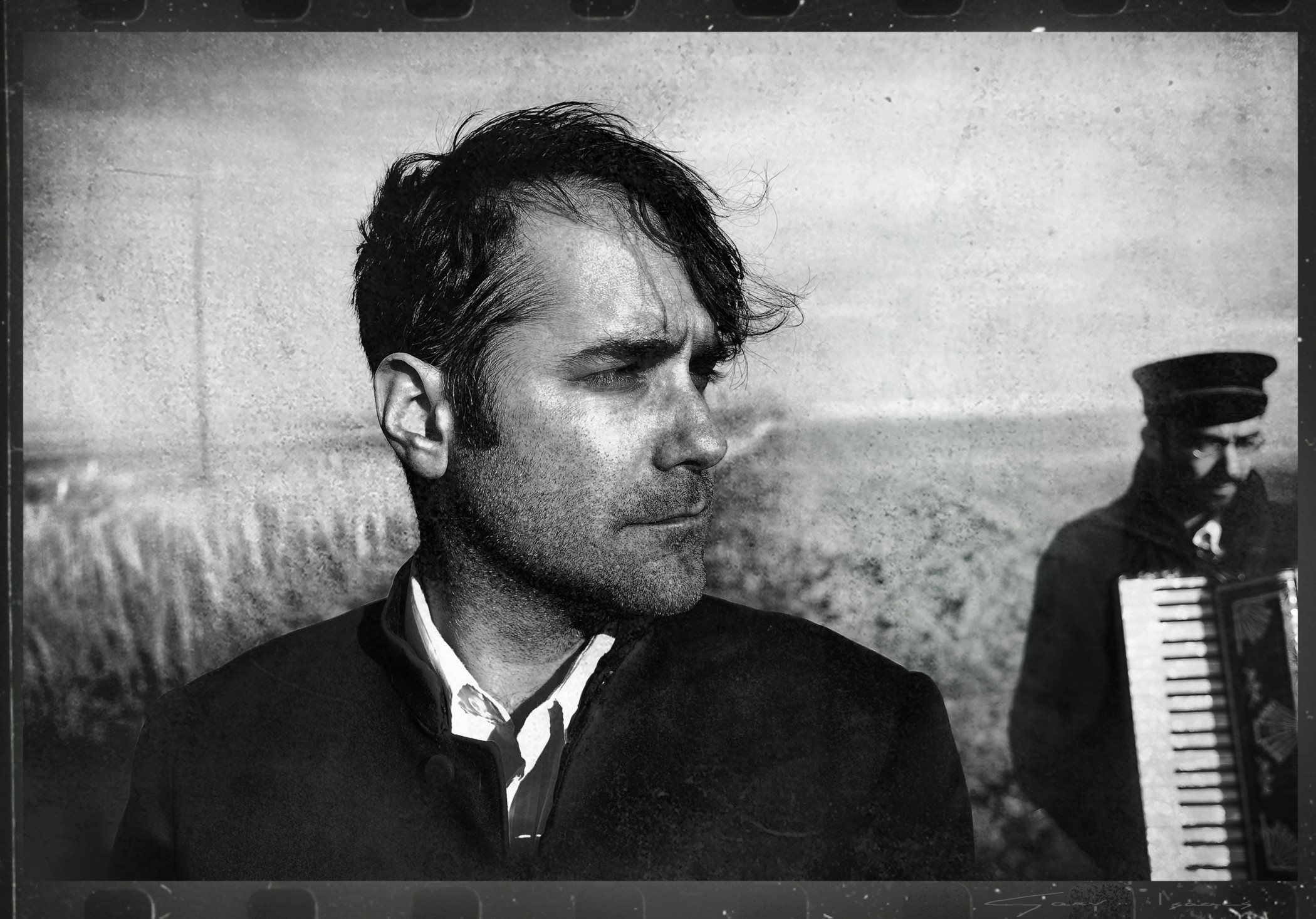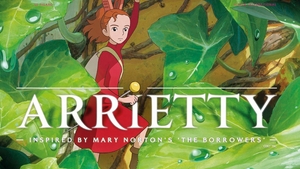
The latest animated feature from the world-renowned Studio Ghibli not only calls on the elements of the great Ghibli films from the past 20 years but more importantly reminds us why we go see their films in the first place. Ghibli pictures are escapism and great storytelling in their most pure and exemplary forms. Moreover, in this adaptation of Mary Norton’s novel The Borrowers, it shows us that we don’t have to go very far from our own bedroom to find an imaginative and rousing tale. Sure there is a small touch of special Ghibli magic and otherworldly themes to The Secret World of Arrietty but it’s easy to believe in a story like this when it comes across so realistic and grounded…like right under your floor boards grounded.
Aside from a fanciful and enchanting story, any animated film released bearing the “Studio Ghibli” label will treat 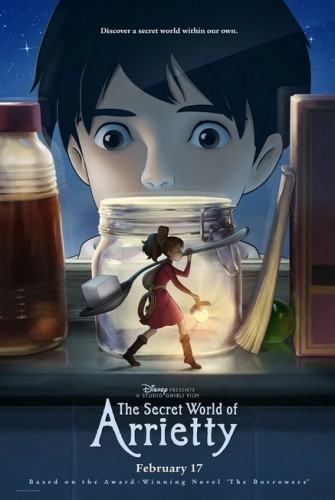 its audience to an abundance of simply astounding visuals not to mention transport them to a world that is so foreign but at the same time has tangible familiarity. The Studio’s artists, this time led by director Hiromasa Yonebayashi, breathe life and wonderment into every frame of this adaptation. They take the time and energy to animate nearly everything on screen expertly and painstakingly animate the scenery, in this case flora, right down to the slightest shifting leaf or blade of grass. It’s gorgeous on an 85 foot screen but even if at home video level these details may be imperceptible, these efforts still go a long way and subconsciously transport us deeper into the story and world depicted. The lush gardens, exquisite scenery, even the large scale and exaggerated textures of buildings/fabrics are insanely beautiful and even more so in the case of Arrietty’s little world. Here it really is the small details that count. As “Borrowers”, Arrietty and her family rather ingeniously make use of any and all objects around them.
its audience to an abundance of simply astounding visuals not to mention transport them to a world that is so foreign but at the same time has tangible familiarity. The Studio’s artists, this time led by director Hiromasa Yonebayashi, breathe life and wonderment into every frame of this adaptation. They take the time and energy to animate nearly everything on screen expertly and painstakingly animate the scenery, in this case flora, right down to the slightest shifting leaf or blade of grass. It’s gorgeous on an 85 foot screen but even if at home video level these details may be imperceptible, these efforts still go a long way and subconsciously transport us deeper into the story and world depicted. The lush gardens, exquisite scenery, even the large scale and exaggerated textures of buildings/fabrics are insanely beautiful and even more so in the case of Arrietty’s little world. Here it really is the small details that count. As “Borrowers”, Arrietty and her family rather ingeniously make use of any and all objects around them.
What is a pure delight to behold is the entire micro-engineered environment that Yonebayashi and the artists at Studio Ghibli created. Examples abound, like the lamp that Arriety’s father carries for instance, and showcase the intricate and believable world made from the tiniest items that Humans take for granted. Every nook and cranny holds ingenuity and creativity waiting to be marveled at, from their gargantuan elements like their methods of travel all the way down to their banal day-to-day utensils. While mostly blunt looking and unrefined, it’s all been designed like everything you see, at least in theory, could actually be used. But how does this impressive diminutive creativity correlate to the plot? With a story of this scale and scope you might expect both a less grand adventure and a much slower pace. Well, yes and no.
True this is one of Ghibli’s more slow-moving stories but at 94 minutes Arrietty never lags and is just as breezy as its animated landscapes. Even though Arrietty and Shawn (the human boy) come from truly different worlds they soon become unlikely friends who help the other by providing valuable support when the other needs it most. Sounds vague but it fits the story. With lovable, albeit lopsided, characters set in a remote location, Arrietty almost seems a parallel/companion piece to Miyazaki’s famous My Neighbor Totoro if that tells you anything about what to expect. In fact, similar to Totoro, Arrietty’s story tells kids and adults that if you look carefully and believe in what common sense dictates you shouldn’t, you’ll find magic and a whole other world that exists in the last place you’d ever look. Familiar Ghibli elements and themes run rampant in Arrietty but this shouldn’t be thought of as the Miyazaki (as far as screenplay) or Yonebayashi (as director) retreading old Ghibli material. Instead they are playing with toys the studio already has in yet another charming and wonderful game of make-believe.
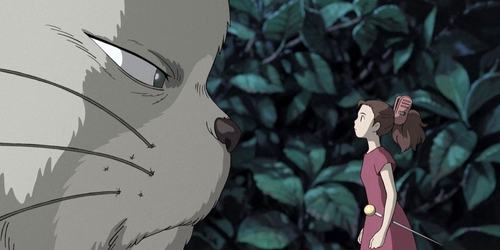
On that note, one thing that’s even more enjoyable than the story or endearing characters is what can be described as Ghibli fan service. Like The Muppets, Arrietty is an exercise in pure nostalgia. It pays tribute to the Studio Ghibli films of the past and plucks at our heartstrings but in ways that are much less in your face. The degree of which these elements exist can be debated depending on who you talk to, and this entire point may be that uber-fan in me reaching for things that may just be coincidence, but there were several instances where calls to early Ghibli films and characters practically leapt off the screen. I won’t go into the running list I started but fans will know the references when they see them and it’ll certainly raise an eyebrow or two and crack more than a smile.
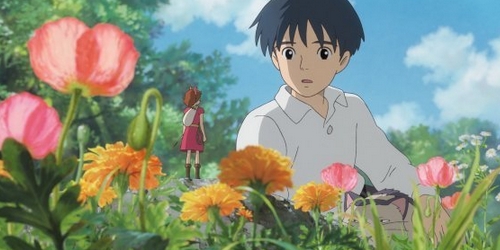
But while the film is stock-piled with that familiar and inviting Ghibli visual goodness, one Studio staple that felt greatly missing was studio mainstay Joe Hisaishi. Yet similar to how Pixar changes things up bringing in new musical talent every few films or so (as they did moving from Randy Newman to Thomas Newman to Michael Giacchino) Cécile Corbel steps in with a score that is, in short, just what this story needed. Her gypsy/renaissance sounding melodies and themes offered the film an otherworldly sound that suitably contrasted the mostly grounded story. Whether or not Hisaishi returns for the studio’s three upcoming features remains to be seen but with this effort, Cécile Corbel has made an indelibly positive contribution to the Ghibli series with The Secret World of Arrietty. Fingers crossed, her work will warrant a return to score more Ghibli films in the future.
G-S-T RULING:
The Secret World of Arrietty is a simple but solid story told in the rich visual and narrative language of Studio Ghibli. It also is a vehicle that has allowed another gifted Ghibli personality make his mark on the animation world while reassuring faith of anyone left a feeling a bit queasy after Tales From Earthsea. Arrietty falls nicely in that that middle ground between the Studio’s fantastical adventure stories and their quaint down-to-earth stories. In a way it’s almost a return to form recalling the elements that made earlier Ghibli films like Whisper of the Heart become an instant classic. That said, this sweet and endearing feature shines and is sure to become one of Ghibli’s best works. Yonebayashi-san’s work here is not just fantastic but, in what is a greater feat, this is a strong sign of things to come from him and Studio Ghibli in the future. I for one cannot wait for that.
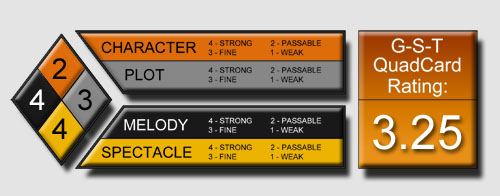
Editor’s Note: To all you purists out there, even if you’re not a fan of dubs, the English cast really nailed their roles for Arrietty and voice talent hasn’t been cast this well since the dub of Porco Roso. Take that for what it’s worth.

